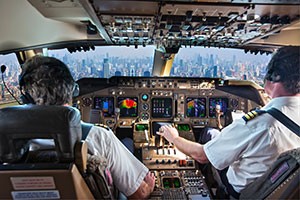Shift Work Sleep Disorder in the Aviation Industry

In 2013, the British Airline Pilots Association surveyed 500 commercial airline pilots wherein 56% admitted to falling asleep on the flight deck. Further, 29% had woken up to find the other pilot asleep. Lack of sleep has proven to be a huge issue in the aviation industry, causing Shift Work Sleep Disorder (SWSD.) SWSD is a condition that largely affects people who work early morning, night, and rotating job shifts. This disorder can cause insomnia, excessive sleepiness, and significant sleep loss- one to four hours per night.
SWSD pertains specifically to circadian misalignment related to a work schedule that overlaps with a traditional sleep-wake cycle. Circadian Rhythm Disruption (CRD) or jet lag, is a major cause of SWSD among pilots and other aircrew members. When traveling across time zones and working when others are normally asleep, their internal biological clock and normal sleep patterns get disrupted, which leads to fatigue, difficulty sleeping, changes in mood, injuries, stomach and intestinal symptoms, and other health problems.
The easiest way to avoid SWSD is to reduce the risk of getting jet lag.
- Try to reduce your time working on very long flights, flights that cross multiple time zones, or flights scheduled when you would usually be sleeping at home
- Adjust your bed time a few days before your trip to match the sleep schedule you’ll have at your destination
- Drink plenty of water before, during, and after your flight. Dehydration has been proven to worsen jet lag
- Eat lightly and strategically as food can have a direct influence on your sleep/wake cycle



